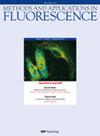Review on long afterglow nanophosphors, their mechanism and its application in round-the-clock working photocatalysis
IF 2.4
3区 化学
Q3 CHEMISTRY, ANALYTICAL
引用次数: 2
Abstract
Semiconductor assisted photocatalysis is one of the most efficient methods for the degradation of complex organic dyes. A major limiting factor of semiconductor assisted photocatalysis is the requirement of a continuous source of light to perform a redox reaction. One of the upcoming solutions is photon energy-storing long afterglow/persistent phosphors. They are an unusual kind of rechargeable, photon energy capturing/trapping phosphors that can trap charge carriers (electrons/holes) in their meta-stable energy levels, thereby resulting in persistent luminescence. Persistence luminescence from such materials can range from minutes to hours. The coupling of long afterglow phosphors (LAP) with the conventional semiconductor is a promising way to support the photocatalytic process even in dark. In addition, dissimilar band structures of LAPs and semiconductor results in formation of heterojunction which further suppresses the recombination of charge. Such an encouraging idea of LAP for round-the-clock working photocatalytic system is in its premature stage; which is required to be investigated fully. Thus, we present a state-of-art review on the potential materials for assisting round-the-clock photocatalysis, trapping-detrapping mechanism in LAP materials, fabrication strategies and their associated characterization tools. Review also covers LAP materials and their photocatalytic mechanism briefly.综述了长余辉纳米荧光粉及其机理及其在全天候工作光催化中的应用
半导体辅助光催化是降解复杂有机染料最有效的方法之一。半导体辅助光催化的一个主要限制因素是需要连续光源来进行氧化还原反应。即将到来的解决方案之一是储存光子能量的长余辉/持久荧光粉。它们是一种不寻常的可充电光子能量捕获/捕获磷光体,可以将电荷载流子(电子/空穴)捕获在其亚稳定能级,从而产生持久发光。这种材料的持久发光可以在几分钟到几小时的范围内。长余辉磷光体(LAP)与传统半导体的耦合是一种很有前途的方法,即使在黑暗中也能支持光催化过程。此外,LAP和半导体的不同能带结构导致异质结的形成,这进一步抑制了电荷的复合。LAP用于全天候工作的光催化系统的这种令人鼓舞的想法还处于早期阶段;这需要进行充分的研究。因此,我们对有助于全天候光催化的潜在材料、LAP材料中的捕获-去捕获机制、制造策略及其相关表征工具进行了综述。综述还简要介绍了LAP材料及其光催化机理。
本文章由计算机程序翻译,如有差异,请以英文原文为准。
求助全文
约1分钟内获得全文
求助全文
来源期刊

Methods and Applications in Fluorescence
CHEMISTRY, ANALYTICALCHEMISTRY, PHYSICAL&n-CHEMISTRY, PHYSICAL
CiteScore
6.20
自引率
3.10%
发文量
60
期刊介绍:
Methods and Applications in Fluorescence focuses on new developments in fluorescence spectroscopy, imaging, microscopy, fluorescent probes, labels and (nano)materials. It will feature both methods and advanced (bio)applications and accepts original research articles, reviews and technical notes.
 求助内容:
求助内容: 应助结果提醒方式:
应助结果提醒方式:


